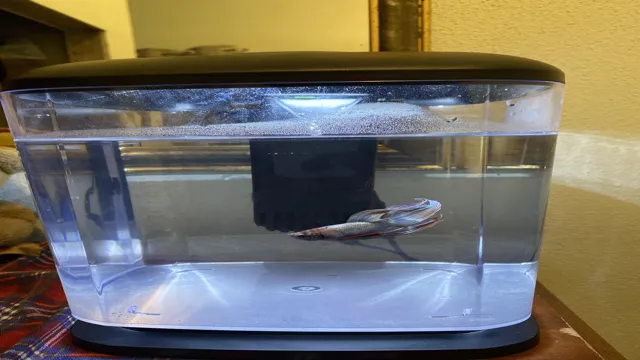
Why Wait 24 Hours to Put Betta Fish in a Tank?
As a proud betta fish owner, I can recall the excitement and anticipation I felt while preparing to welcome my new aquatic friend into its new home. However, I was puzzled by the instructions to wait 24 hours before introducing my betta to its tank. Intrigued by this seemingly arbitrary rule, I embarked on a journey to unravel the reasons behind this waiting period.
The Importance of Cycling
The 24-hour waiting period plays a crucial role in establishing a balanced and healthy aquatic environment for your betta. During this time, the tank undergoes a process known as cycling, allowing beneficial bacteria to colonize and establish a stable ecosystem.
Cycling involves introducing nitrogenous compounds into the tank water, which stimulates the growth of nitrifying bacteria. These bacteria convert toxic ammonia and nitrite into less harmful nitrates, making the water safe for fish. The cycling process typically takes several weeks, but the 24-hour wait period provides an initial boost to bacterial growth.
Acclimation and Stress Reduction
Introducing a betta into an uncycled tank can be highly stressful for the fish. The sudden change in water chemistry and the presence of toxic substances can lead to shock, disease, or even death. The 24-hour waiting period allows the fish to gradually adjust to its new environment.
During this time, you can float the betta’s transport container on the surface of the tank water, allowing the water temperatures to equalize. This gradual acclimation helps minimize stress and ensures a smooth transition for your betta.
Avoiding Ammonia Spikes
While cycling is underway, the ammonia levels in the tank water will fluctuate. Ammonia is a toxic substance that can cause serious health problems in fish, including burns, respiratory distress, and organ damage. The 24-hour waiting period gives the beneficial bacteria time to establish themselves and begin converting ammonia into nitrates, reducing the risk of ammonia spikes.
Tips for Successful Acclimation
- Check Water Parameters: Before introducing your betta, test the pH, temperature, and ammonia levels of both the transport water and the tank water. Ensure they are within a safe range for bettas.
- Acclimate Gradually: Float your betta’s transport container in the tank for 30-60 minutes, allowing the water temperatures to equalize.
- Release Gently: After acclimation, carefully open the transport container and gently release your betta into the tank.
- Monitor Regularly: Keep an eye on your betta’s behavior and water parameters in the following days. Ensure the fish is eating, swimming normally, and not showing signs of stress or disease.
Frequently Asked Questions
Q: Can I skip the 24-hour wait period if I use a water conditioner?
A: Water conditioners do not eliminate the need for cycling. They temporarily neutralize ammonia and chlorine, but they do not establish the beneficial bacteria needed for a healthy environment.
Q: How long does it take for the tank to cycle completely?
A: The cycling process typically takes 4-6 weeks. However, the 24-hour waiting period provides an initial boost to bacterial growth.
Q: What are the signs of an uncycled tank?
A: Uncycled tanks often have high ammonia and nitrite levels, which can cause fish to exhibit lethargy, gasping at the surface, or other symptoms of distress.
Conclusion
Understanding the importance of the 24-hour waiting period is essential for the health and well-being of your betta fish. By allowing the tank to cycle and gradually acclimating your fish to its new home, you can create a safe and thriving environment for your aquatic companion.
Are you interested in learning more about betta fish care? Join our online community and connect with fellow enthusiasts who can provide valuable insights and share their experiences.

Image: japanesefightingfish.org

Image: www.rewritetherules.org
How To Introduce Your Betta Fish to Other Fish / Tank Mates – YouTube Mar 8, 2024I began explaining the intricacies of starting an aquarium. “To ensure a stable and healthy environment for your fish,” I began, “it’s generally recommended to wait at least 24 to 48 hours before adding them to a new tank. This waiting period allows the tank’s ecosystem to establish essential conditions like water temperature and